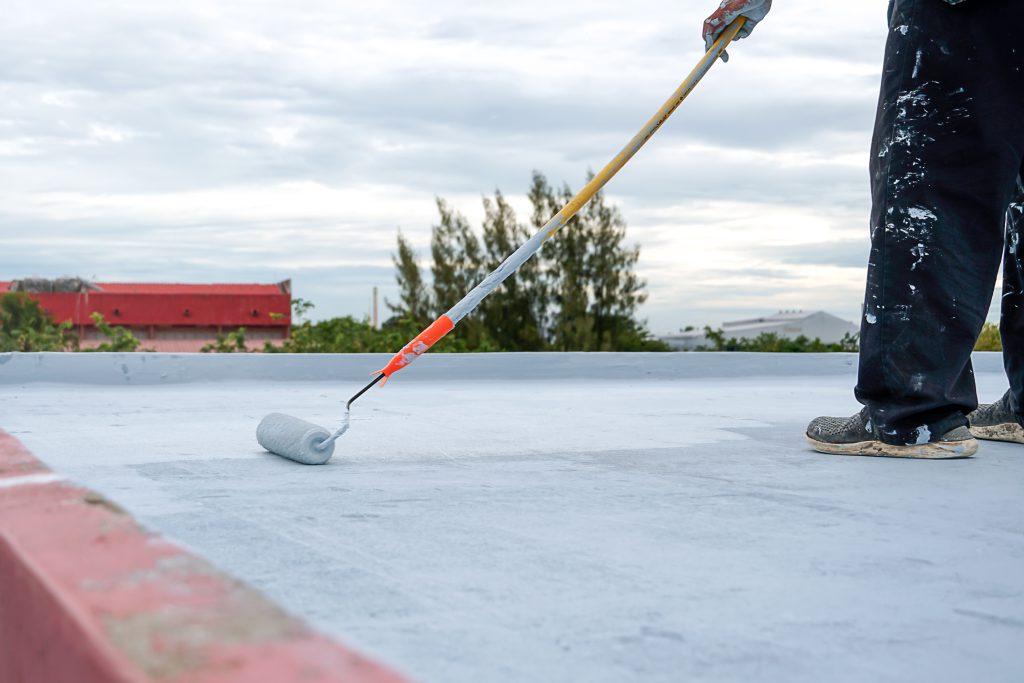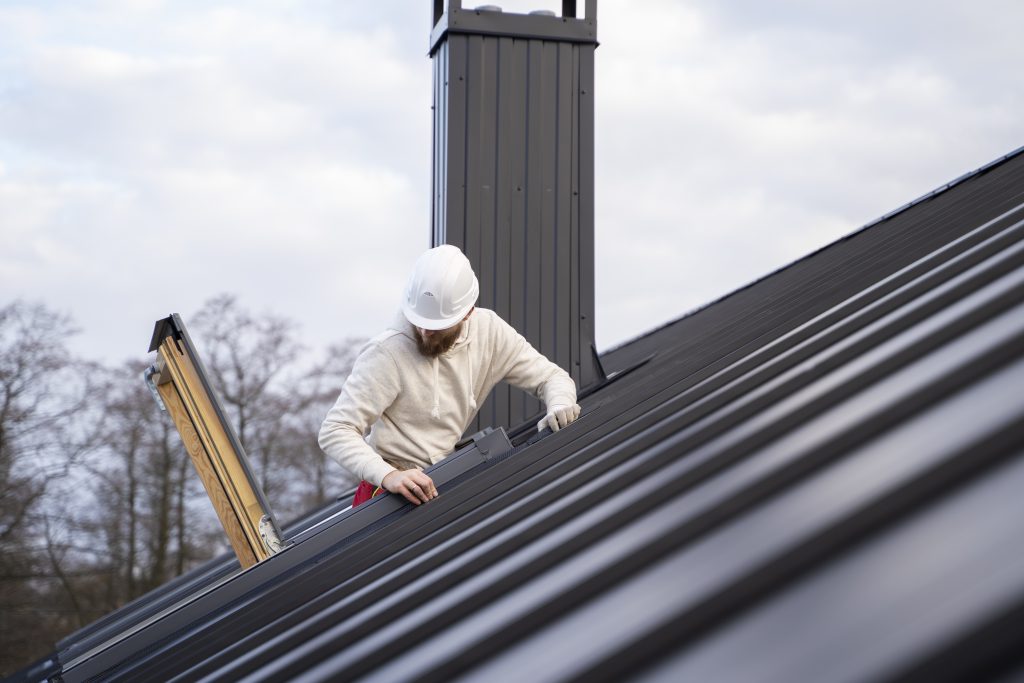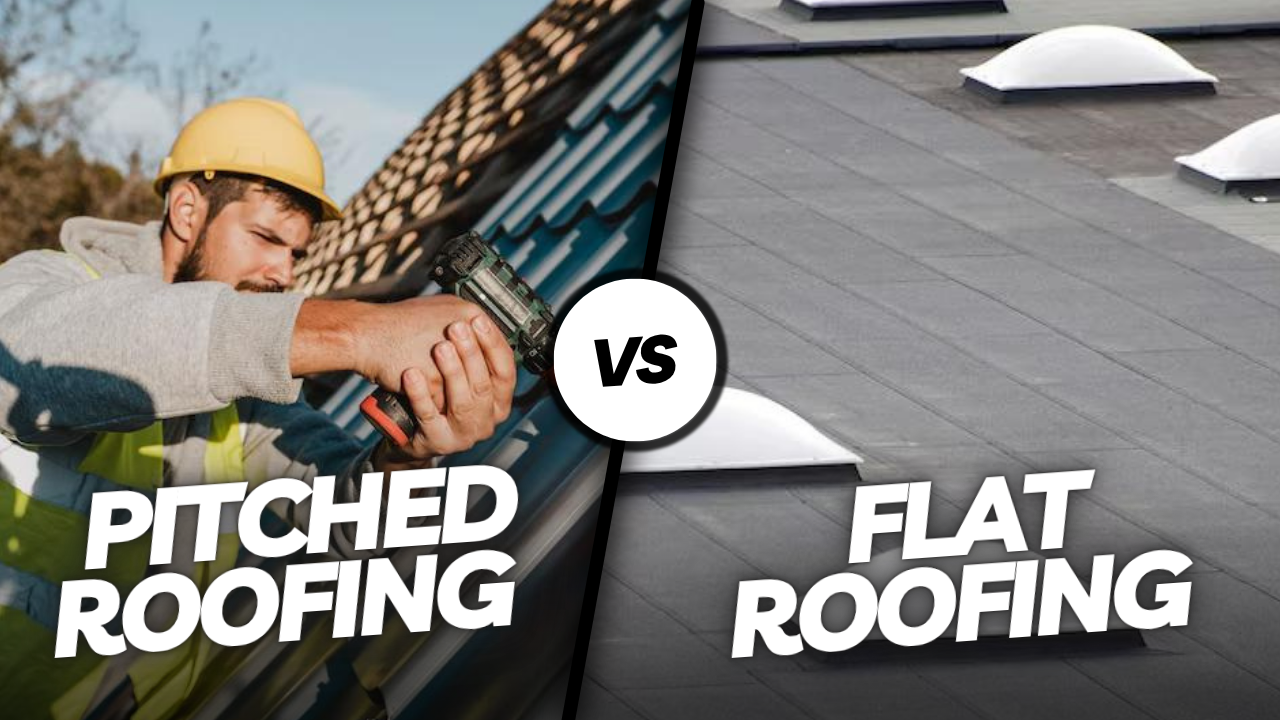When it comes to roofing, one of the most common decisions homeowners face is whether to install a flat roof or a pitched roof. Both options have their advantages and disadvantages, but the best choice depends on various factors, including aesthetics, cost, climate, and long-term durability. In this article, we’ll explore the differences between flat and pitched roofing, helping you decide which is better for your UK home
Flat Roofing: Pros and Cons

What Is Flat Roofing?
Flat roofs, as the name suggests, have a nearly horizontal surface. Although they are not entirely flat, they have a very slight pitch, typically around 1-10 degrees. This roofing type is commonly found in modern architecture, extensions, and garage conversions.
Advantages
- Cost-Effective: Flat roofs are generally more affordable to install than pitched roofs due to their simpler design and fewer materials.
- Space Utilisation: A flat roof can serve as additional outdoor space for gardens, decks, or even solar panels. This is a significant advantage in urban areas with limited outdoor space.
- Modern Aesthetic: Flat roofs are often preferred in contemporary home designs, offering a sleek, minimalist look.
- Ease of Installation and Maintenance: Flat roof service are quicker and easier to install, and they require less maintenance than complex pitched roofs.
Disadvantages
- Water Drainage Issues: Since flat roofs have minimal slope, water drainage can be a problem, leading to pooling or leaks if not maintained properly.
- Durability: Flat roofs tend to have a shorter lifespan compared to pitched roofs, especially if they are not regularly maintained.
- Insulation Challenges: Proper insulation is vital for flat roofs to prevent heat loss and moisture buildup, which can be costly to fix.
Pitched Roofing: Pros and Cons

What Is Pitched Roofing?
Pitched roofs have a sloping design that allows rain and snow to run off easily. These roofs come in various styles, such as gable, hip, or mansard, and are commonly seen in traditional and older buildings throughout the UK.
Advantages
- Superior Water Drainage: The primary benefit of pitched roofs is their natural ability to shed water and snow, reducing the risk of leaks and water damage.
- Longevity: Pitched roofs are more durable than flat roofs, with many lasting 50 years or more when properly maintained.
- Better Insulation: The structure of a pitched roof allows for better insulation, keeping your home warm in the winter and cool in the summer.
- Aesthetic Appeal: Pitched roofs are often associated with classic, charming homes and offer more variety in design options.
Disadvantages
- Higher Installation Costs: Pitched roofs are more expensive to install than flat roofs due to the complexity of the design and materials required.
- Limited Useable Space: Unlike flat roofs, pitched roofs do not offer additional usable space on top, which can be a disadvantage for certain homeowners.
Factors to Consider When Choosing
When deciding between flat and pitched roofing, there are several important factors to consider. First, the climate and weather in the UK play a significant role. The UK’s often wet and windy climate makes effective drainage crucial for flat roofs, while pitched roofs naturally shed rain and snow, reducing the risk of leaks and water damage. Cost is another factor—flat roofs are generally more affordable upfront, making them a budget-friendly option, but pitched roofs tend to offer more long-term value due to their greater durability and longevity.
In terms of aesthetic preferences, pitched roofs are typically associated with traditional and heritage-style homes, offering a more classic look, while flat roofs complement modern and minimalist designs. Lastly, maintenance should be considered—pitched roofs, though more durable, may require more upkeep in terms of repairs, tile replacement, and gutter cleaning, while flat roofs demand regular inspections to ensure proper drainage and to prevent potential leaks.
Which Is Better for UK Homes?
The answer depends largely on your home’s design, your budget, and the climate in your area. For modern homes or extensions, flat roofs can be a great choice due to their cost-effectiveness and aesthetic appeal. However, if you live in an area prone to heavy rainfall or snow, pitched roofs may provide more reliability and longevity. Additionally, the long-term benefits of a pitched roof may outweigh the initial higher cost for homeowners looking for durability.
Conclusion:
In conclusion, the choice between flat roofing and pitched roofing depends on several factors, including your home’s design, budget, and the specific weather conditions in your area.Ultimately, the best roofing option for your UK home roof service will depend on your individual needs and preferences. Whether you opt for the modern appeal of a flat roof or the reliability of a pitched roof, both offer unique advantages to suit different lifestyles and budgets
Ready to get started? Contact us for a free quote today!
FAQs
Which is more affordable: a flat roof or a pitched roof?
Flat roofs are generally more affordable to install due to their simpler structure and reduced material needs. However, pitched roofs may offer better long-term value thanks to their durability and lower risk of water damage.
Are flat roofs suitable for the UK climate?
Flat roofs can be used in the UK, but they require proper drainage systems and regular maintenance due to the country’s frequent rainfall. Without good drainage, water pooling and leaks can occur over time.
Do pitched roofs last longer than flat roofs?
Yes, pitched roofs typically last longer than flat roofs. With proper maintenance, many pitched roofs can last 50 years or more, while flat roofs often require replacement or major repairs after 20–30 years.
Can a flat roof be used for extra outdoor space?
Absolutely. One of the main advantages of flat roofs is their ability to double as outdoor living areas, such as roof terraces, gardens, or spaces for solar panels—especially in urban UK settings.
Which roofing type is better for energy efficiency?
Pitched roofs often offer better insulation and energy efficiency due to their structure, which allows for thicker insulation layers. Flat roofs can be efficient too, but they require specialized insulation solutions to match the performance of pitched roofs.

